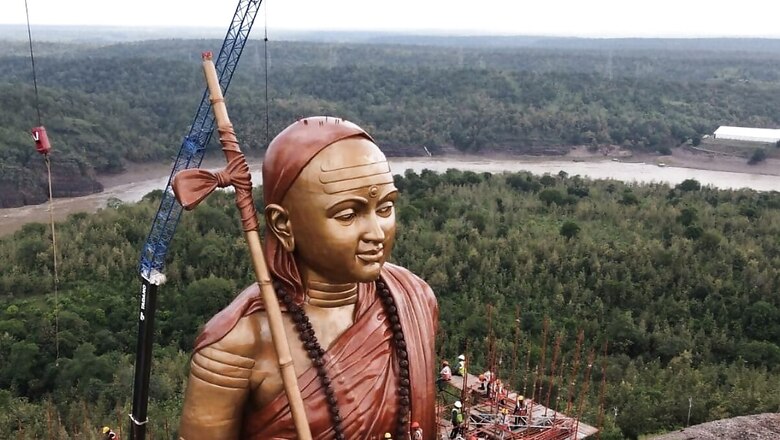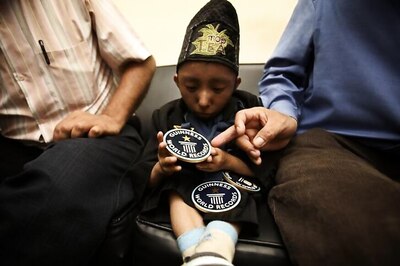Revisiting Role of Adi Shankaracharya in Uniting Spirit of Bharat as Statue Set to be Unveiled in MP

views
The 108-feet-tall statue of Adi Shankaracharya in Madhya Pradesh on September 21 marks the oneness of India and embodies the message of Advaita Vedanta as propagated by the reformist-philosopher himself.
The statue, which was commissioned as Icon of Unity and Oneness at Omkareshwar in Madhya Pradesh, has an initial portrait created by a Sholapur-based artist Vasudev Kamath in 2018. It was followed by a massive public rally and processions titled Ekatma Yatra that covered around 23,000 gram panchayats across the state. During the Yatra, metal for the statue was sought and collected with the help of community participation, thus, making the statue a set example of public-private participation.
Madhya Pradesh Chief Minister Shivraj Singh Chouhan in a chat with Vithal C Nadkarni, who is a senior editor and columnist, recalled the glorious achievements of Adi Shankaracharya and spoke about his glorious association with the state.
Chouhan further said Shankaracharya “unified the land called Bharat-varsha not only with his celebrated credo of monism called Advaita Siddhanta, but also with his creation of the four spiritual mathas or monasteries strategically located in the four corners of this great land”.
“This also highlights the timeless appeal of Acharya’s philosophy,” Chouhan added, “for not only was the Master a child prodigy but he walked on foot at a tender age to all over India for unity. He also brought the various sects under one roof with the worship of multiple deities on a single platform; he is therefore also lauded greatly as “Shanmata-Sthapanacharya” or the Unifier of Six Creeds. He also composed voluminous commentaries on the Upanishads, the Brahma Sutras and the Bhagvad Gita in addition mellifluous verses to the deities, all of which remain as classic authorities even today.”
Among the six main sects during Shankara’s time in 9th century was one devoted to the Mother Goddess and the four cults centred on worship of Surya, Vishnu, Shiva and Ganesh. The sixth cult was focused on the God Skanda-Kartikeya also known as Subrahmanya or Shanmukha: as a martial deity, the son of Shiva and Parvati and elder sibling of Ganapati, Kartikeya or Mahasena and Kumara in North India and is predominantly worshipped in Tamil Nadu and other parts of South India, Sri Lanka, Singapore, Malaysia and Mauritius by Tamils as Murugan. Shankaracharya did all this in his 32 years of lifespan.
Adi Shankara is also venerated today across the country as the very incarnation of Lord Shiva as the “Great Teacher or Dakshinamurti”.
First vice-president of India Sarvepalli Radhakrishnan wrote about the cultural tensions among sects at the time of Adi Shankara and how the time needed a genius who “could stretch the old moulds without breaking them and synthesise the warring sects on a broad basis of truth”.
Mahamohopadhyaya PV Kane in his magisterial ‘History of Dharmashastras’, which won him the Bharat Ratna, India’s highest civilian award, wrote, “In modern times, these five devatas are still worshipped, but they are differently arranged according as the worshipper places one or the other of the five in the centre.”
Thus, Adi Shankaracharya brokered peace between the sects and united India by bringing all the five/six sects onto a single platform for worship.




















Comments
0 comment